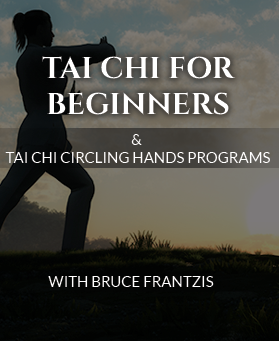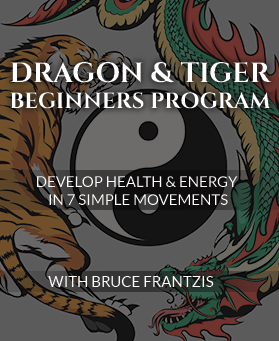Taoist Lineage Holder Bruce Frantzis demonstrates the energies of the single, double, and smooth palm changes, along with how they are used in martial arts fighting applications.
This footage was taken from Bruce’s Bagua Double Palm Change event in Atherton, California.





Great videos!
I’m also very much looking forward to purchasing the full course, it sounds excellent.
Both of these clips- especially the second one showing the essence of the Single vs Double Palm change “energy-flavours” I could feel my mind-body-sensory thinking/working as I viewed this… I’d loved to have been there- and seeing these will be avail, if we missed it… but just viewing and considering what is on that second vid- awesome
gary
I left a comment when I first saw this, but it seemed it didn’t get saved on this webpage….
*** I found the above videos to be quite compact- with conceptual information/energy that I sensed my body/mind struggle with as I was merely watching the videos (I’ve been “learning” this art for a while, and heard that info previously, and yet still the impact).
I’d recommend the second video especially due for quite a bit of pondering and ‘percolation’… as just those principles seem to not be grasped or embodied, and yet if/when they are.. Bagua Zhang NeiGung possibilities
(I just wish I could have “understood” what I have recently back when I tried to begin learning/practicing I wish I could have been to the event(s) recently, and yet much to ponder from this (the concept that the Santi as well as the Bagua: Double and Wind palm? -will be available on DVD… awesome) Thanks for this presentation and in your sustaining your transmission.
Just awesome info
gary
It is good to see you looking so well. I just found this site. I have your video tapes from long ago on Tai Chi applications, Did Bagua come before Tai Chi or after? What you are doing here with this site is great and I thank you so much for the Tai Chi Secrets Report. There is always something to learn, even after many – many years doing Tai Chi. I am wishing you the best and always stay well because you have so much enrichment to give others.
Chip
Historically the Taoist monastic tradition of bagua came first.
The spiritual tradition of bagua based on the i-ching was the oldest.
However, if you look at the martial art tradition, Xingyi was the first, Tai chi was the second, Bagua was the third.
Xingyi came about around 1100s. Chen village Tai Chi in the 1600s. Bagua as a martial art in the 1800s.
Thank you for answering about the historical position of Bagua. I have another question which is more technical in nature. What puzzles me about Bagua is how the continuity of the internal force is maintained. I ask this because when I watch the form it clearly seems not to follow Tai Chi principles. The graceful circular movements seem to go in and out of compliance with what we are taught in Tai Chi. For example the position of the elbows in reference to the shoulder and the hands above the head etc. We learn in Tai Chi that these principles are necessary for the manifestation of the internal force. Bagua also uses the same force but it appears that the manifestation of the internal force is somewhere in the transitional position of the circular movement. What is going on in the Bagua circular movement internally so that the correct force arrives at the hand and is there commonality to these principles or not?
Thanks again, Chip
Applicable explanations in Chapter 3 – “The power of Internal Martial Arts”.